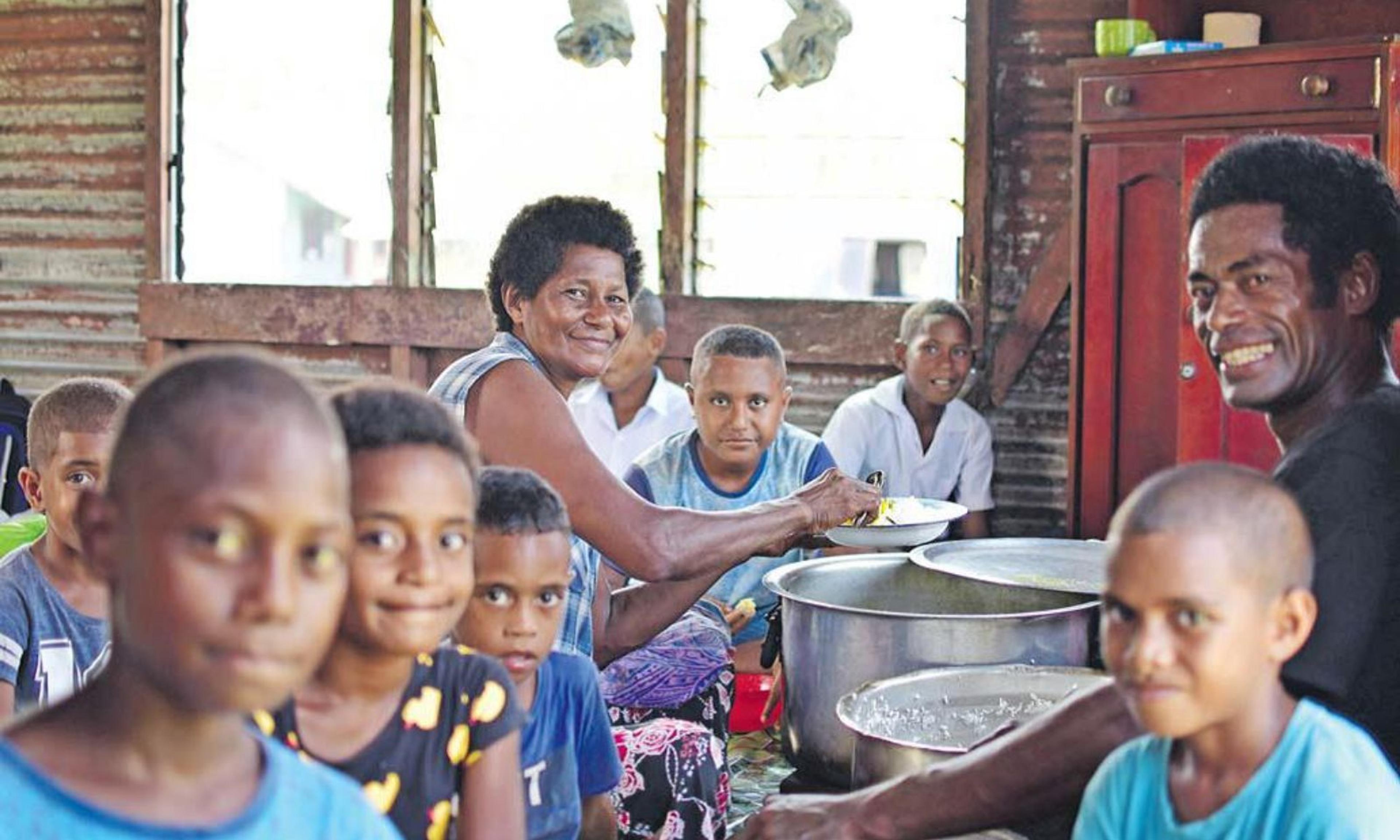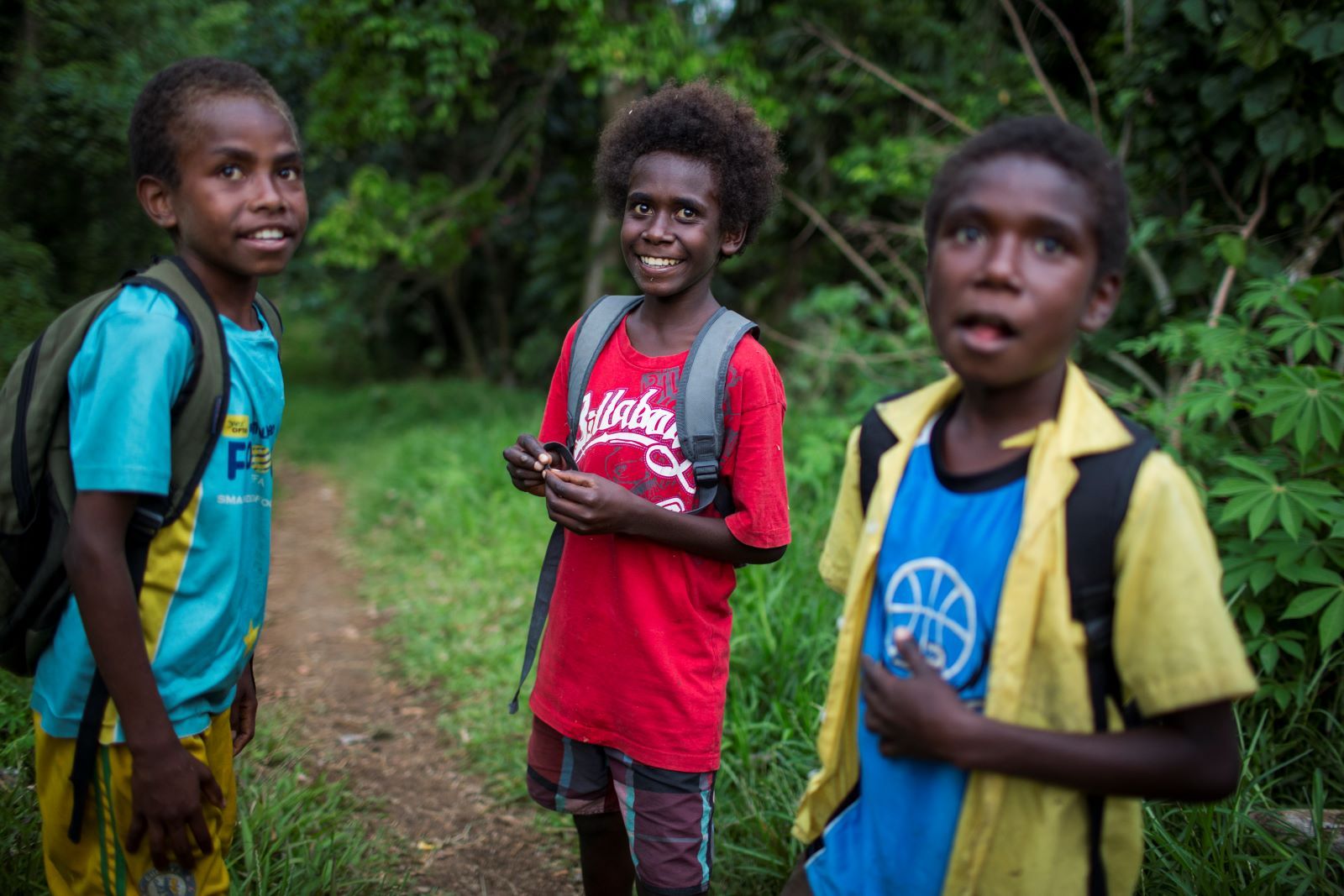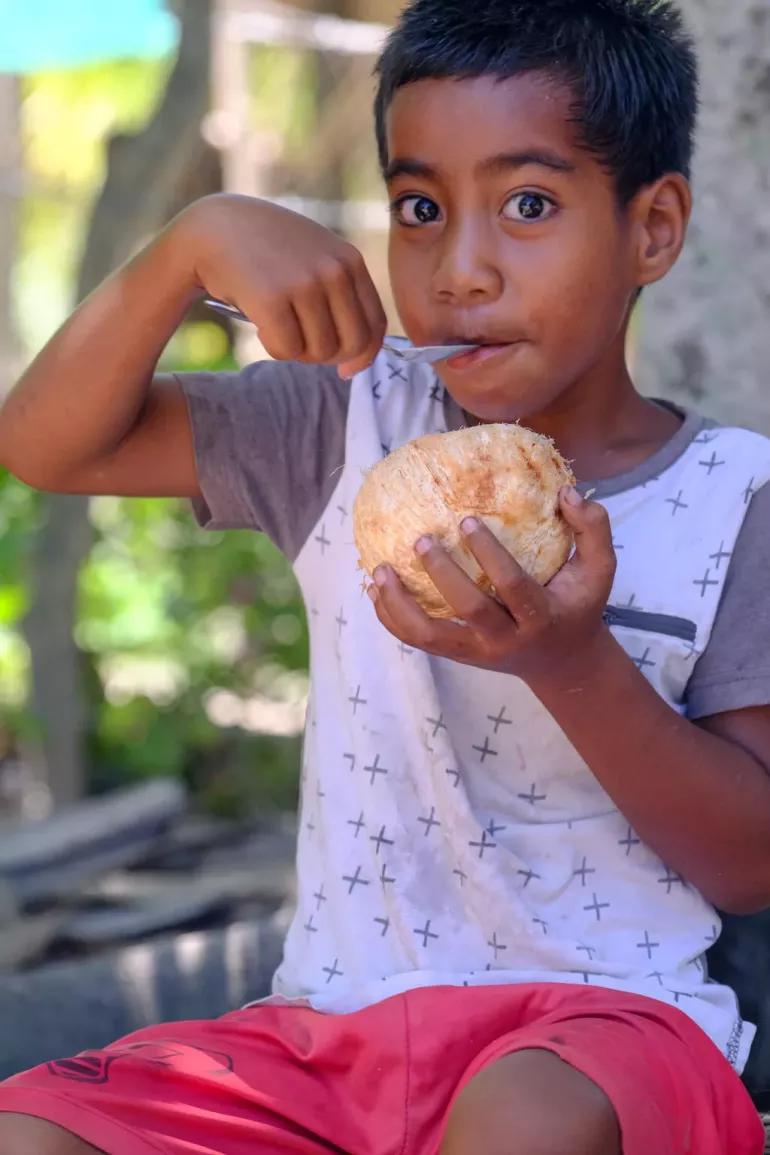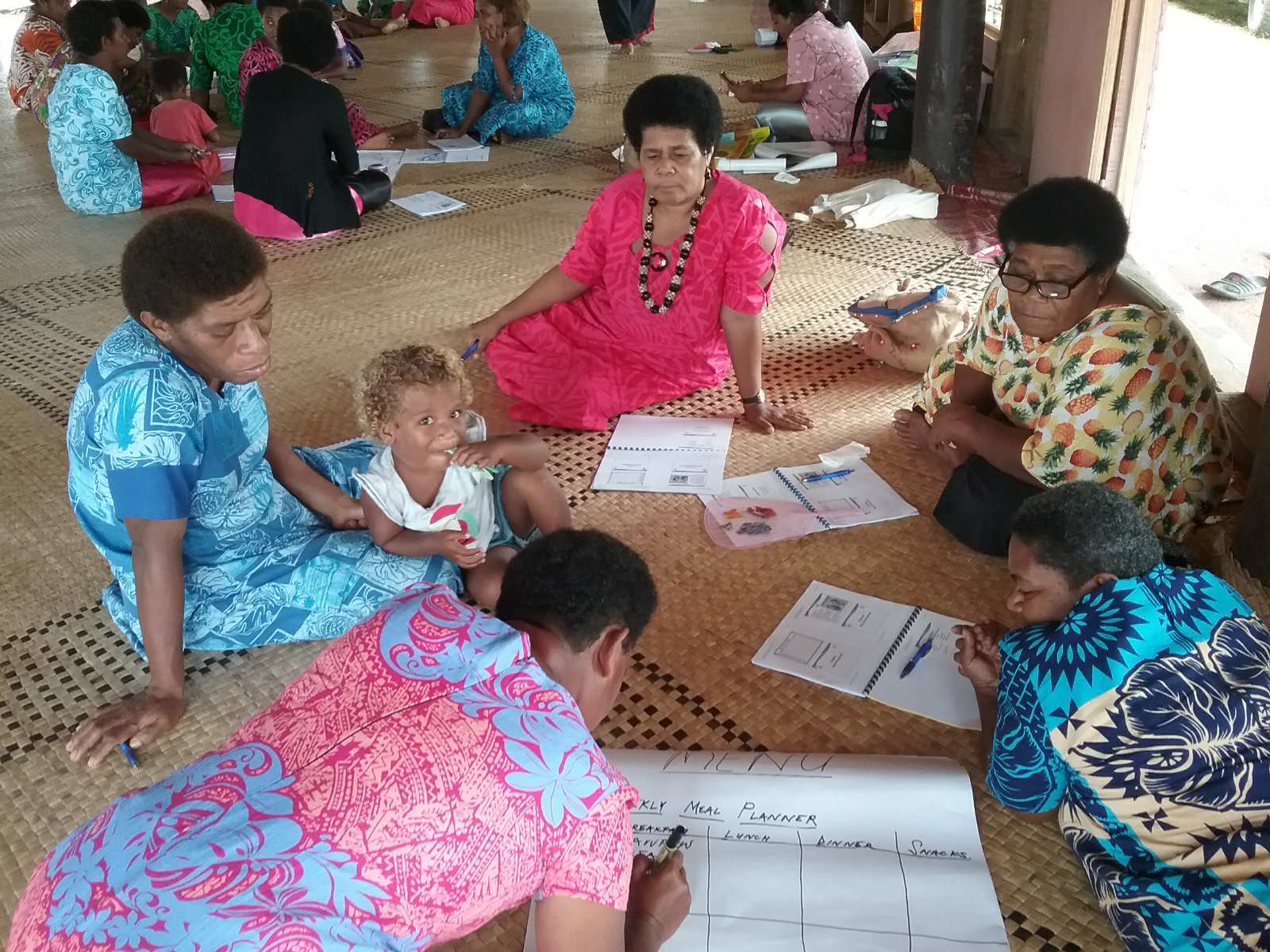

Children in Fiji receive school meals prepared by local mothers, a vital initiative to ensure no child goes hungry.
Photo/The Fiji Times/Ovesa Naisua/File
Pacific families going hungry: How rising costs, climate change are creating food crisis
From Fiji’s school children to Pacific communities in New Zealand, food insecurity is growing fast. Climate change, high prices, and weak food systems are making it harder for families to access healthy meals.



Will’s Word: When a party president becomes the headline, something’s gone wrong


Flying Fiji stay sharp, BlitzBoks steal a thriller and Auckland FC rule the derby once again


Will’s Word: When a party president becomes the headline, something’s gone wrong

Food insecurity is becoming a serious problem across the Pacific. It affects how children learn, how families live, and how communities grow.
Many Pacific people depend on farming, fishing, and small incomes. When prices go up, crops fail, or disasters strike, families struggle to put food on the table.
The United Nations' agencies - Food and Agriculture Organization (FAO), Children's Fund (UNICEF), and the Pacific Community (SPC), all warn that climate change, reliance on imported food, and economic instability make Pacific nations especially vulnerable.
Across the region, families are feeling the pressure of high food prices and limited access to healthy, affordable options. Many Pacific countries rely heavily on imported foods, which become even more expensive when global prices rise or shipping costs increase.
At the same time, climate change is damaging local crops and fishing grounds, leaving communities with fewer traditional foods to depend on. These challenges don’t stop at national borders, they follow Pacific people wherever they live.
This is why Pacific communities in places like New Zealand face similar hardships, especially when basic groceries become too expensive. The same forces shaping food insecurity in island nations are also hurting Pacific families abroad, making food affordability a shared regional issue.

Pacific children promote healthy eating through a “food warrior” programme, learning to cook with local foods. Photo/UNICEF
Supermarket reforms aren’t enough: A New Zealand perspective
PMN News recently reported how these pressures affect Pacific people even in New Zealand.
According to Dr Anae Neru Leavasa, a Pacific health expert, the New Zealand Government’s supermarket reforms are too small to make a real difference.
The reforms aim to speed up approval for new stores and boost competition between retailers like Foodstuffs and Woolworths, but Leavasa calls them “tiny steps” that don’t fix the root problem of high grocery prices.

Pacific families in New Zealand also feel the strain of rising food costs, with experts saying current supermarket reforms are “tiny steps” in a much bigger crisis.
He links those high prices directly to poor health in Pacific communities: when food costs are high, people often buy cheaper, calorie-dense foods that lack nutrition.
Two-thirds of Pacific adults in New Zealand are obese, he notes, which increases risks of diabetes and heart disease. For Leavasa, food policy must be treated as health policy.
He argues for bold, structural changes - where stronger competition laws, reforming wholesale-retail relationships, and more investment in nutrition education can lower prices and improve diet.
This perspective underlines that food insecurity is not just a problem in remote islands, it also affects Pacific communities in wealthy countries. It shows how deeply connected food access, health, and policy are.
Watch advocates share their views on collective gardening below.
Fiji
In Fiji, food insecurity is visible in schools. The Fiji Times recently reported that many children still go to school without lunch because their families simply can’t afford daily meals.
Nirmala Nambiar, executive coordinator of the Foundation for the Education of Needy Children (FENC Fiji), described how in one village in Naitasiri, some 45km from the capital Suva, mothers have set up a community kitchen where they take turns cooking so children can have breakfast or lunch at school.
Nambiar told the Times that hunger prevents kids from focusing in class: “Mothers take turns cooking meals for children at school … to ensure children don’t go hungry. That’s why initiatives like this are so vital. They make sure children can concentrate in class instead of worrying about food.”
Nambiar also says that even government help doesn’t always reach its intended purpose. Some children receive a $200 back-to-school grant, but their families use that money first to pay for food, bills, and other basic needs.
Because of deep poverty, many children continue to face disadvantages. “While the intent is good … it’s not sufficient to ensure every child has the support they need,” Nambiar says. “Our goal is to leave no child behind … We want children to attend school, receive a proper education, and grow into productive members of society.”
Sugar Minister Charan Jeath Singh has echoed some of those concerns, admitting that despite free tuition, many kids still struggle with uniforms, transport, and even access to safe water and sanitation in schools.

School children in Vanuatu: school feeding programmes and local food initiatives aim to improve nutrition and attendance. Photo/ACIAR
Papua New Guinea (PNG)
PNG is one of the most food-insecure countries in the Pacific. A large part of the population lives in rural areas, relying on small gardens and local crops.
When droughts or flooding happen, families lose their food supply. FAO reports that this climate vulnerability, combined with a lack of infrastructure, makes access to nutritious food very difficult in remote areas.
UNICEF also warns that poor nutrition is harming children’s health and school performance. Some teachers report that during dry seasons or crop failure, children come to school weak or hungry.
Solomon Islands
In the Solomon Islands, people face high food prices, but they are also regularly hit by natural disasters like cyclones and floods that devastate crops and fishing grounds.
The Pacific Community (SPC) has pointed out that these events force families to depend more on imported, processed foods, which are often cheaper but less nutritious.
Rural schools in the Solomon Islands report children coming to class without having had a proper meal, and local community groups, churches, and NGOs often step in to help feed and support these students.

A child in Kiribati enjoys a simple snack, highlighting how one in six Pacific children faces severe food poverty. Photo/UNICEF
Kiribati
Kiribati’s challenges are very different but no less serious. Its islands are low-lying, the soil is poor, and fresh water is scarce, making traditional farming very hard. Because of these environmental limits, Kiribati must rely heavily on imported food, which is expensive and less healthy.
Rising sea levels only make things worse by reducing the already small amount of usable land. According to FAO, this deep dependence on imported food makes Kiribati especially vulnerable. UNICEF reports that many children in Kiribati struggle with poor nutrition because healthy food options are limited and costly.
Why food insecurity is a big deal
Education: Hungry children can’t focus or learn well. As seen in Fiji and parts of PNG or Solomon Islands, food shortages hurt school performance.
Health: Poor diets lead to malnutrition, obesity, and chronic illness. Leavasa’s point about obesity in Pacific communities in New Zealand makes it clear that food policy is very much a health issue.
Future: When children don’t eat well or miss school, it affects their future job opportunities and the broader development of their country.

In Fiji, mothers’ groups help run school meal programmes to support children’s nutrition and learning. Photo/FAO
Looking ahead
Communities are already stepping up: in Fiji, mothers run a school kitchen; across other islands, local groups help feed children.
Governments and policymakers should take bold action: strengthen competition in food retail, reform wholesale-retail systems, lower food costs, and invest in nutrition education.
International and regional support matters: Pacific countries need more aid, technical help, and resilient agricultural strategies that deal with climate change.